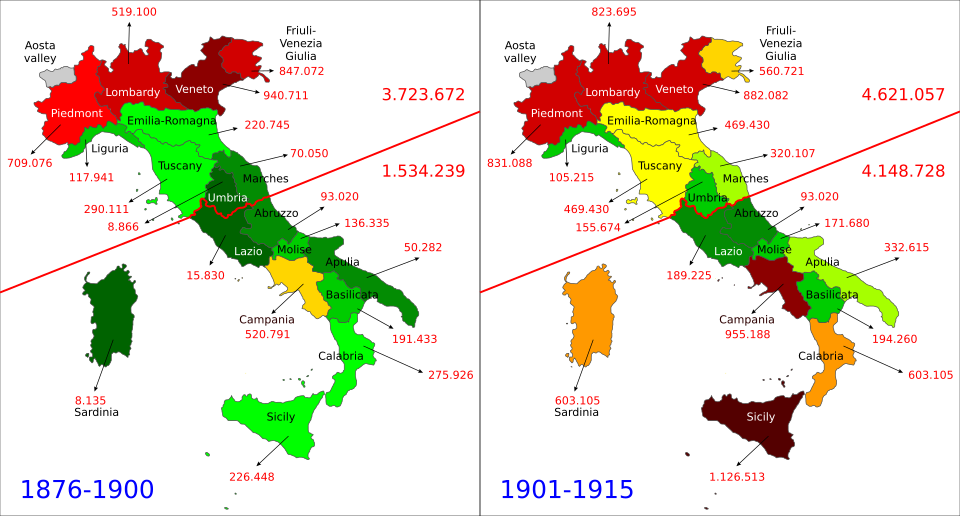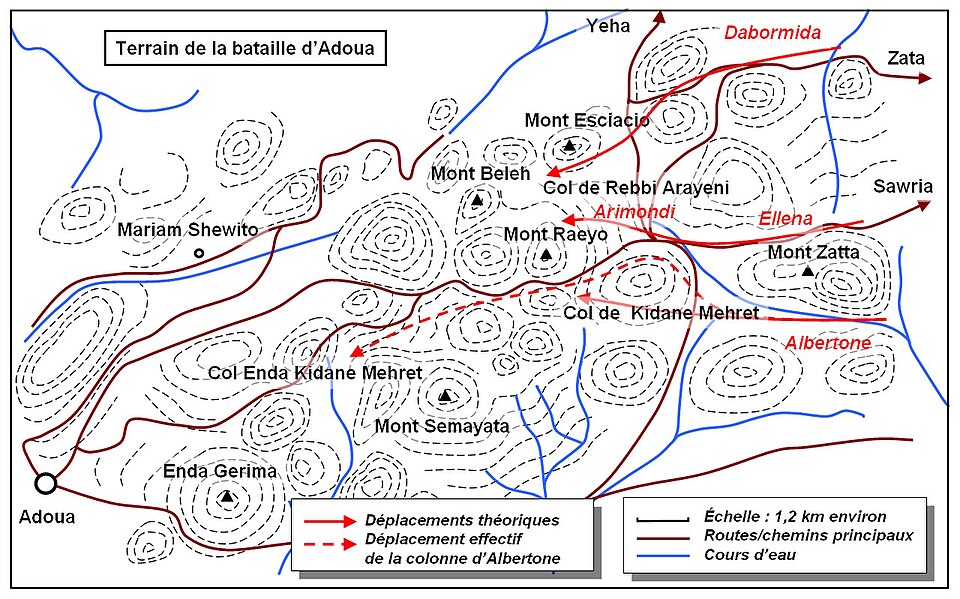OCR Specification focus:
‘Italy in 1896; political, social and economic problems, including the legacy of Trasformismo.’
Italy in 1896 faced major political instability, social tensions, and economic weakness. These challenges shaped the fragile liberal state and provided the context for future crises.
Italy in 1896: Political, Social and Economic Problems
Political Landscape in 1896
Italy was a newly unified state (achieved in 1861), but by 1896 it was still fragile and divided. The monarchy under King Umberto I and the parliamentary system struggled to maintain legitimacy.
The government was dominated by a small political elite, largely northern, educated, and wealthy.
Political participation was severely limited; suffrage was restricted to around 7% of the population before later reforms.
Regional divides made national unity weak, with the South (Mezzogiorno) particularly alienated.
Trasformismo: A method of Italian politics where governments were formed by bribery, compromise, and shifting parliamentary alliances rather than by firm party loyalty.
Trasformismo undermined effective democracy. Instead of promoting stability, it produced short-lived governments and corruption, alienating the public.
Social Problems
Italian society in 1896 was deeply fragmented. Class divisions and regional inequalities defined much of social life:
The South: Widespread poverty, illiteracy, and reliance on subsistence agriculture. Large landowners dominated politics and suppressed peasant uprisings.
The North: More economically advanced, with growing urban centres and industrialisation, but also experiencing social tension from rapid change.
Emigration: Millions left Italy (particularly from the South) for the Americas and northern Europe due to lack of opportunity.

Choropleth map summarising emigration per region in 1876–1900 and 1901–1915, with clearer outflows from the Mezzogiorno. It visually reinforces regional imbalance driving late-19th-century social tension. Source
Urban working class: Facing poor wages and conditions, workers increasingly turned to socialist organisations and trade unions.
The social divisions meant there was little sense of a unified Italian identity in 1896.
Economic Weaknesses
Italy was one of the poorest European states by the late 19th century. Problems included:
Agriculture: Outdated techniques, low productivity, and frequent natural disasters such as droughts and disease (including phylloxera, which devastated vineyards).
Industry: Concentrated in the north, with small-scale and relatively underdeveloped production compared with Britain, France, or Germany.
Infrastructure: Railways and roads were limited, especially in the South.
Trade: Italy had a weak export economy and relied heavily on imports for grain, contributing to vulnerability in times of crisis.
Economic weakness reinforced social unrest, especially among peasants and urban workers.
The Legacy of Trasformismo
Nature of Trasformismo
Introduced by Prime Minister Agostino Depretis in the 1870s, Trasformismo was intended to reduce political instability by forming broad-based coalitions. Instead, by 1896 it had entrenched several problems:
Corruption: Politicians used bribes, favours, and patronage to secure votes in parliament.
Lack of accountability: Governments fell frequently because alliances were fragile.
Alienation: Ordinary Italians saw politics as dishonest and irrelevant to their lives.
This political culture created disillusionment and limited faith in parliamentary democracy, leaving the system vulnerable to future authoritarian challenges.
Effects on Governance
Trasformismo meant governments were preoccupied with survival rather than reform. As a result:
Social and economic grievances went largely unaddressed.
No coherent national policies emerged to integrate the South or reduce inequalities.
Reformist measures, when introduced, were inconsistent and often diluted by compromise.
By 1896, the system seemed incapable of responding to growing pressures from socialists, Catholics, and nationalists.
The Crisis of 1896 and Its Impact
The Defeat at Adwa
In 1896, Italy faced a humiliating military defeat at Adwa in Abyssinia (modern Ethiopia).

Map showing General Baratieri’s planned Italian troop movements at the Battle of Adwa (1 March 1896). The arrows and unit labels explain the dispersion of Italian columns and the vulnerability this created. Source
This failure:
Undermined Italy’s prestige as a supposed “great power.”
Intensified public anger at the government’s corruption and incompetence.
Highlighted the weakness of Italy’s economy and military organisation.
The defeat demonstrated the dangers of expansionist policies pursued without domestic stability or adequate resources.
Political Repercussions
Following Adwa, there was widespread protest:
The government of Crispi fell, leaving Italian politics in turmoil.
The monarchy’s prestige was damaged, though it remained central to the state.
Radical and opposition movements gained strength, including socialists, who argued that imperial ambitions were wasteful.
This crisis exposed the fragility of the Italian liberal system and the failure of Trasformismo politics to maintain stability.
Regional and Social Divisions in Greater Detail
The South (Mezzogiorno)
The Mezzogiorno remained a particular problem:
Economic backwardness meant low agricultural output and widespread rural poverty.
Brigandage (banditry) and unrest required frequent military intervention.
Peasants resented northern-dominated taxation and state control.
The gap between North and South hindered the development of a shared national identity.
The Church and the State
Relations with the Catholic Church were strained. Since 1870, when Rome was annexed, the Pope had refused to recognise the legitimacy of the Italian state.
The “Non Expedit” decree forbade Catholics from participating in national politics.
This left the liberal state isolated from much of Italy’s religious population.
Anti-clerical measures in education and marriage law further fuelled resentment.
The Seeds of Change
By 1896, the Italian state faced:
Weak political institutions reliant on corrupt Trasformismo.
Deep social divisions, particularly between north and south, rich and poor.
Economic underdevelopment, which fed discontent and emigration.
Foreign policy failure, symbolised by the disaster at Adwa.
These problems meant the liberal system was fragile and vulnerable. While it survived into the 20th century, the cracks evident in 1896 would continue to widen, paving the way for challenges from socialism, nationalism, and eventually fascism.
FAQ
Italy was the only European state in the late 19th century to suffer a decisive defeat at the hands of an African army. Most European powers were consolidating colonial empires, whereas Italy’s attempt at expansion in Abyssinia ended in a disaster that exposed its military weakness.
The defeat undermined Italy’s claim to being a “great power” and contrasted starkly with the success of Britain and France in Africa, deepening a sense of inferiority at home.
Trasformismo worked by co-opting individuals into shifting coalitions, rather than developing structured party systems.
Politicians prioritised personal gain and survival over ideology.
Organised parties, like the socialists or Catholics, remained excluded from government.
This fragmentation prevented the emergence of coherent opposition or policy platforms, leaving the system brittle.
As a result, Italy lagged behind other European states where party politics was strengthening.
King Umberto I held significant constitutional powers, including the right to appoint prime ministers and dissolve parliament.
He often supported conservative leaders such as Francesco Crispi, backing policies of repression against protest and expansion abroad. The king also relied heavily on the army, which was used to suppress strikes and riots.
This close association between monarchy, conservatism, and repression alienated many Italians, particularly workers and peasants, from the liberal state.
The Pope’s refusal to recognise the Italian state after 1870, combined with the “Non Expedit” decree, limited Catholic participation in national politics.
This weakened the legitimacy of parliament, as millions of devout Catholics were effectively excluded from political life.
At the local level, however, Catholics continued to influence society through parishes, charities, and schools, ensuring tension between secular and religious authorities remained a defining feature of Italian politics.
Emigration relieved some social pressure, particularly in the rural South where land was scarce. Families often depended on remittances sent back by relatives abroad.
However, it also had negative effects:
Communities lost much of their young male workforce.
The state faced criticism for failing to provide opportunities at home.
Emigration reinforced perceptions of Italy’s weakness compared to industrialised powers.
By 1900, mass migration had become both a symbol of Italy’s poverty and a survival strategy for its people.
Practice Questions
Question 1 (2 marks)
What was Trasformismo in Italian politics?
Mark Scheme
1 mark for identifying it as a method of forming governments through shifting alliances or coalitions.
1 mark for explaining it relied on bribery, patronage, or compromise rather than party loyalty.
Question 2 (6 marks)
Explain two problems facing Italy in 1896, and how each problem weakened the stability of the liberal state.
Mark Scheme
Award up to 3 marks for each problem (max 6).
Problem 1: Political weakness
1 mark for identifying limited suffrage, elite dominance, or the weakness of Trasformismo.
1 mark for explaining how corruption or fragile coalitions caused unstable government.
1 mark for linking to public alienation or disillusionment with liberal politics.
Problem 2: Social or economic issues
1 mark for identifying issues such as rural poverty in the South, emigration, poor industrial development, or foreign policy defeat (Adwa).
1 mark for explaining consequences, e.g., unrest, regional divisions, or weakened confidence in the state.
1 mark for linking to the fragility of national unity or political legitimacy.
Answers must show both identification and explanation. Partial credit can be awarded for answers that mention problems without explaining their impact.

